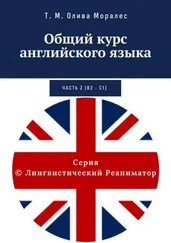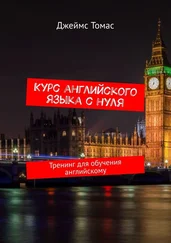T o n y : Yes! I wonder how on earth they manage to fit today's pop songs into pantomime
stories?
S a l l y : Well, why don't we get tickets and find out?
T o n y : Yes, OK. Come on, then.
ESSENTIAL VOCABULARY (II)
Words
act υ
gallery n
properties
acting n
interval n
(props) n
balcony
n
lighting n
repertoire n
box n
matinee
n
row n
cast n
orchestra-pit n
stage-manager
n
company n
pit n
stalls n
costumes
n
produce υ
(theatre-) house n
director n
producer
n
treatment n
dress-circle n
production n
the pit (back rows).
The stalls and the pit are surrounded by boxes. There are also some balconies encircling the auditorium on three sides. The
lowest of them (coming immediately above the boxes) is called the dress-circle and the highest (somewhere near the ceiling of the
house) is known as the gallery.
In most theatres the seats for the audience are separated from the stage by the orchestra-pit. In some theatres, however, there is no
orchestra-pit, and the musicians are placed behind the scenes (back-stage). The sides of the stage and the scenery placed there are
called wings.
81 It takes quite a number of people to put on a play. The treatment of a play, the style of the production, the training of the
performers depend on the director (also called by some people producer in Great Britain). The stage-manager is the person in charge
of the technical part of the production of a play. There are also make-up artists, people who make the costumes, those who design
the props and scenery, and finally, stage hands.
The actors taking part in the play are called the cast ( cf . the Russian «состав исполнителей»).
Word Combinations
professional theatre
the setting of a scene
repertory company
light and sound effects
amateur theatre
to produce a play
dramatic society
EXERCISES
I. Answer the following questions:
A.1. What is the centre of theatrical activity in Great Britain? 2. Which theatrical companies
receive financial support from Arts Council? 3. What is meant by a repertory theatre? 4. What do
you know about the Royal Shakespeare Company? 5. What kind of performances are staged in the
Royal Opera House? 6. Are there many theatres in or near the West (East) End of London? 7. What
kind of music is popular in England? 8. Are there any amateur theatres in Great Britain? 9. What
leading actors of the British theatre do you know? 10. How are the British Arts Councils going to
celebrate approach of the millennium?
B.1. How is the Russian theatre organized? 2. What Russian theatres are best known in
Russia and abroad? 3. Is attendance at our theatres high? 4. How many times a month (a year) do
you go to the theatre? 5. Are there any amateur theatres in Russia?
II. Try your band at teaching:
A.Preparation, a) Find picture representing a theatre-house, b) Study the footnotes on p. 327
describing a theatre-house and its parts, c) Write questions to provoke answers containing all the new
words.
B.Work in class. Ask your questions, listen to the an- -swers and correct the student's
mistakes.
III. Learn Text В by heart. Act out this dialogue.
IV. Retell Text С in your own words.
Speak on your favourite genre (opera, drama, ballet, comedy, musical, etc). Why do you
like it?
V. Translate the following into English:
Когда мы пришли, зал был уже полон. Через несколько минут занавес поднялся, и все
взгляды устремились на сцену. Декорации были очень простые, выдержанные в черных,
белых и серых тонах. На этом фоне яркие костюмы действующих лиц выглядели очень
эффектно.
Состав исполнителей был неплохой, а игра актера, исполнявшего главную роль, была
просто великолепна. Когда он был на сцене, внимание всего зрительного зала было
сосредоточено на нем и его игре. Во время знаменитой сцены из третьего акта в зале стояла
мертвая тишина. Зрители были потрясены. Многие плакали. К тому же, эта сцена была удачно
освещена. Режиссер удачно использовал освещение, чтобы усилить впечатление от игры
актера.
Когда после заключительной сцены занавес опустился, наступила долгая пауза, а потом
поднялась настоящая буря аплодисментов.
VI. Read the following and either agree or disagree with the statements. (See
the Reminder.):
1. The house is the part of the theatre where the members of the orchestra usually sit. 2. An
auditorium is a building or a part of a building in which the audience sit. 3. The audience include
both spectators and actors. 4. When the audience is pleased it keeps silent. 5. We say "the house is
full" when not all the seats in the auditorium are occupied. 6. The pit is nearer to the stage than the
stalls. 7. You prefer seats in the gallery, don't you? 8. Wings are the sides of a stage with the scenery.
9. You wouldn't like to go behind the stage, I believe. 10. The cheapest seats are in the boxes. 11.
The most expensive seats are in the orchestra stalls. 12. Students always buy seats in the orchestra
stalls. 13. By the cast of the play we mean all the actors belonging to the theatrical company. 14, The
role of the producer is not very important. 15. You don't know who Stanislavsky was, I believe. 16. It
doesn't take many people to produce a play. 17. I believe you clap to show your appreciation of the
acting or the play as a whole.
Reminder. Beyond all doubt. I should think so. I won't deny it Most likely. I disagree with
you. On the contrary. You are wrong. Just the other way round. Not me! By no means.
VII. a) Describe your impressions of a play (opera, ballet) you have seen.
Follow the plan below:
1. Going to the theatre. (How did you get the tickets? Where were your seats? Was the house
full?)
2. The play. (Was it interesting? What was interesting? What didn't you like about it?)
3. The acting. (Was the cast good? Whose acting impressed the audience? In what scenes?)
4. The production. (Did the production help the audience to catch the main idea of the play?
In what points of the production did you feel the work of the producer? Did the general spirit of the
production satisfy the demand of the play?)
5. Designing. (Did you like the scenery? How were the light and sound effects used?)
Читать дальше
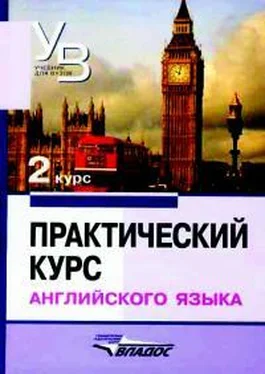
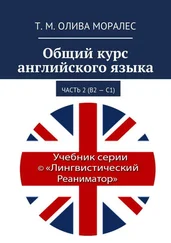

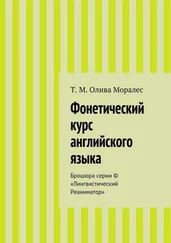
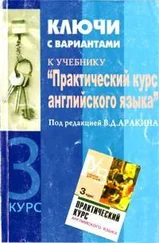
![Владимир Аракин - Практический курс английского языка 3 курс [calibre 2.43.0]](/books/402486/vladimir-arakin-prakticheskij-kurs-anglijskogo-yazyk-thumb.webp)




